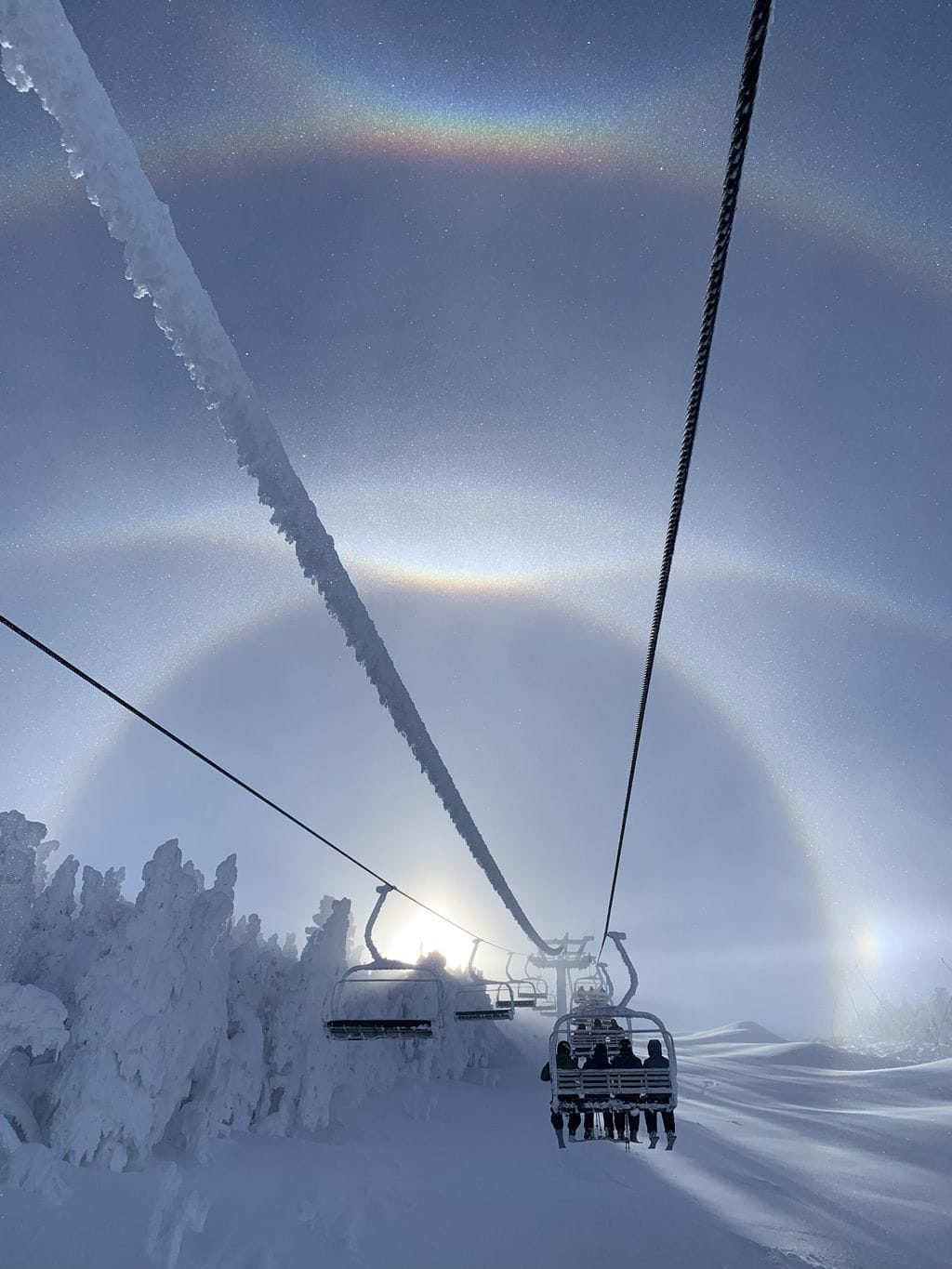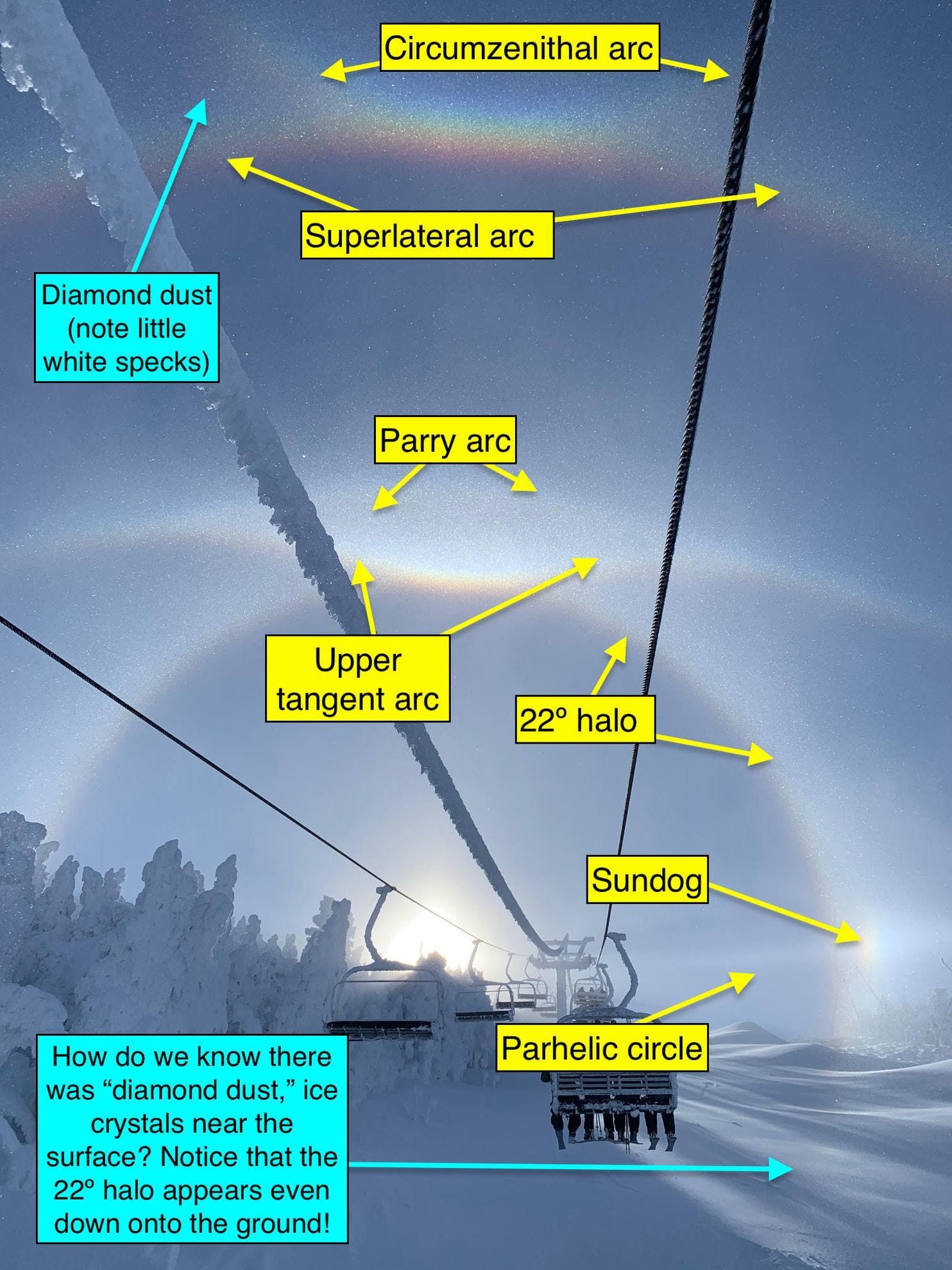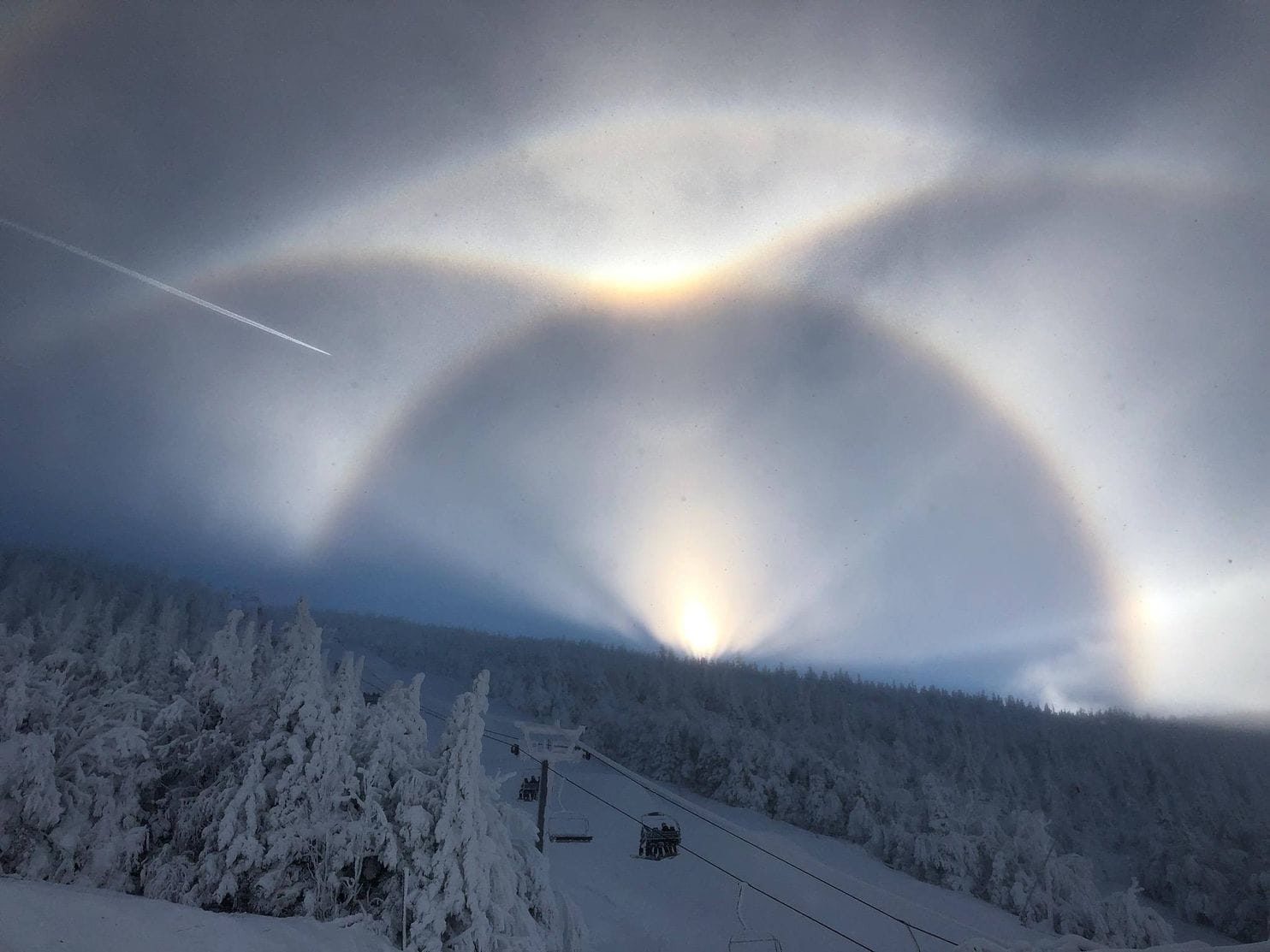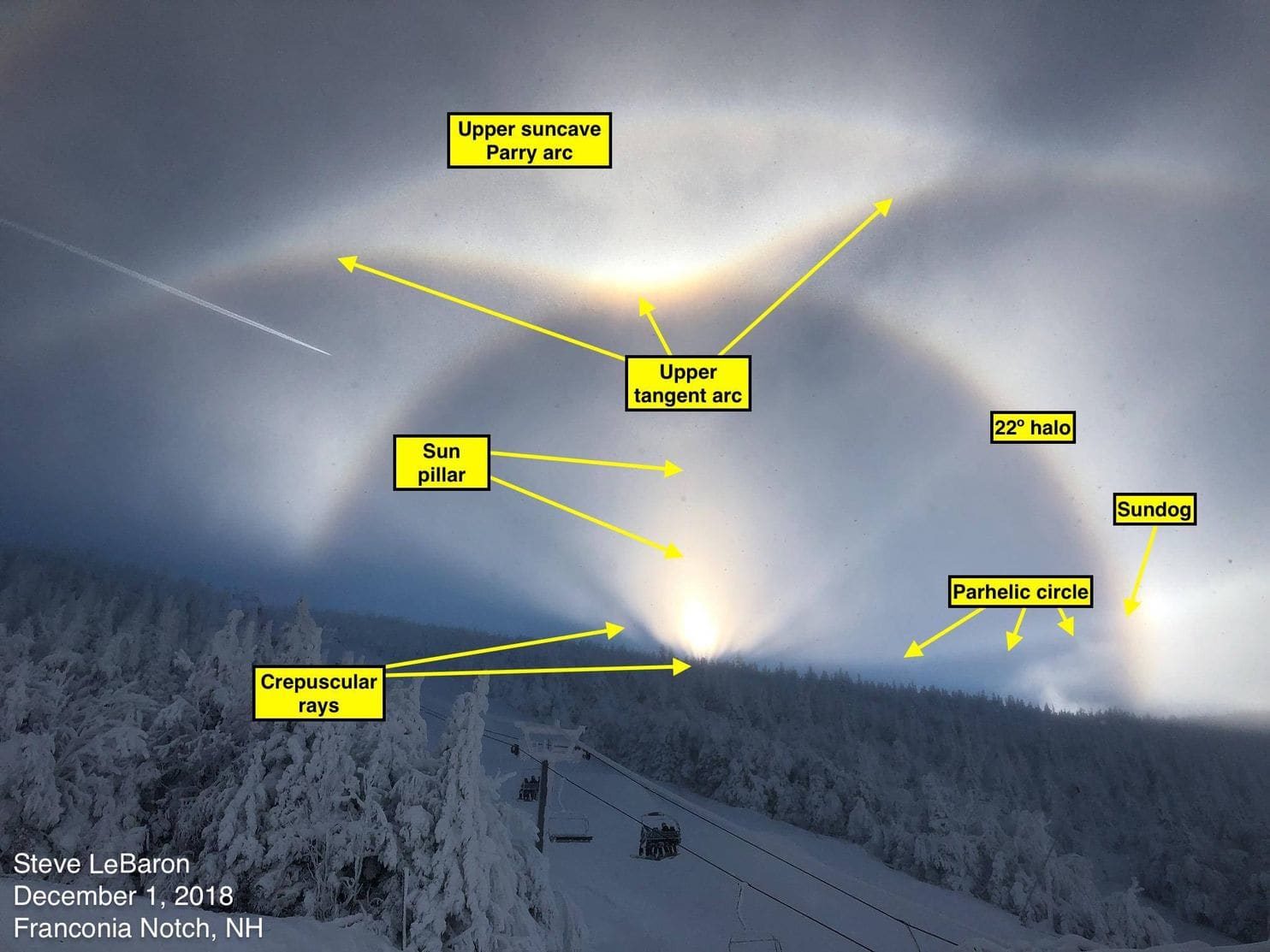Thursday update: Newly obtained photo shows off additional dramatic sky phenomena

© Alex Kotzias
After posting the original version of the story, Alex Kotzias wrote in with this incredible photo taken from Cannon Mountain's chairlift. The portrait-mode photo captures two more halo phenomena that were high up out of view in the original photograph:
a superlateral arc and a circumzenithal arc. The former curves downwards, while the latter opens up like a bowl. Circumzenithal arcs look like upside-down rainbows wrapping around an imaginary point straight above.

© Alex Kotzias, adapted by Matthew Cappucci/WaPo
Part of the reason? Diamond dust. Kotzias' photo confirms the presence of tiny ice crystals floating around in the air at ground level. That's what those shimmering white sparkles are. The ice crystal overload means the 22-degree ring can even appear to shimmer down on the ground! And like a diamond, the resulting colors were truly priceless.
Original article, from Wednesday

© Steve LeBaron
Mother Nature must have liked it, because she put
five rings on it!
This was
the surreal scene Saturday morning at Franconia Notch in New Hampshire. Steve LeBaron of the New Hampshire Department of Transportation's Highway Design Bureau captured a stunner of a sky atop Cannon Mountain while skiing.
LeBaron's dazzling shot actually includes seven atmospheric phenomena - some are common,
others quite rare. Temperatures below freezing and moisture aloft combined to produce a layer of ice crystals in the sky. That alone isn't terribly unusual. But in this case, the crystals were predominantly shaped as hexagonal columns. They
most commonly form at temperatures below 20 degrees.
Sunlight entering the crystalline prisms slows down and is split into colorful components. By the time it exits the prism, the rays are refracted - or bent - about 22 degrees. The result? A multicolored band around the sun.
Additionally, the ice crystals must be poorly oriented, their randomness allowing the full circle of colors to form. However,
unlike rainbows, halos are centered on the sun. Rainbows are anchored about the point in the sky opposite the sun and are wider - 42 degrees.

© Steve LeBaron, adapted by Matthew Cappucci/WaPo
While refraction is the main player in halos, reflection is responsible for what is called the parhelic circle. A parhelic circle always develops at the same height in the sky as the sun. It resembles a monochromatic Hula-Hoop piercing the sun itself. Hexagonally shaped ice crystals again are integral to the process.
Different parts of a parhelic circle are filled in by differing orders of reflections.
Near the sun, it's an
external reflection, meaning sunlight bounces off the outside wall of an ice crystal and ends up somewhere else. Farther away, the sunlight enters the ice crystal, striking the wall from the inside before exiting through another face. On occasion, up to five internal reflections can occur, illuminating parts of the halo most distant from the sun. Since refraction doesn't really play a role, the white light isn't separated - and doesn't get broken down into its brilliant assortment of shades.
Where the
parhelic circle and the 22-degree arc intersect, splotches of light called sundogs form. This is due to horizontally parked hexagonal prisms; on either side of the sun, the refracted colors are beamed directly toward the observer. Blue light is refracted more significantly, and the resultant inner edge of the sundog is tinged red instead.
Parry arcs are particularly rare. The spectacle was first witnessed by William Edward Parry on April 8, 1820, during a naval quest to find the Northwest Passage.
Parry arcs involve exceptionally complex ray paths and require a specific alignment of crystals. It's a similar story for the upper tangent arc. Even wackier is that both flatten out as the day progresses, flirting with each other before eventually merging. They're most dramatic early in the morning, with the characteristic "v" shape, as seen in LeBaron's photograph.
The upper and lower tangent arcs only appear close to sunrise or sunset. If the sun is greater than 29 degrees above the horizon, the two arcs join into a "circumscribed halo." When the sun climbs too high, the two overlap fully, so spotting this feature is quite rare.
LeBaron's picture also showcases two more sky phenomena.
A shaft of light known as a sun pillar stretches upward from the sun. Meanwhile, clouds low to the horizon cast alternating bands of shadows across the landscape - known as crepuscular rays.Next time you see a ribbon of colors around the sun, try your hand at figuring out what's going on up there!
Reader Comments
to our Newsletter